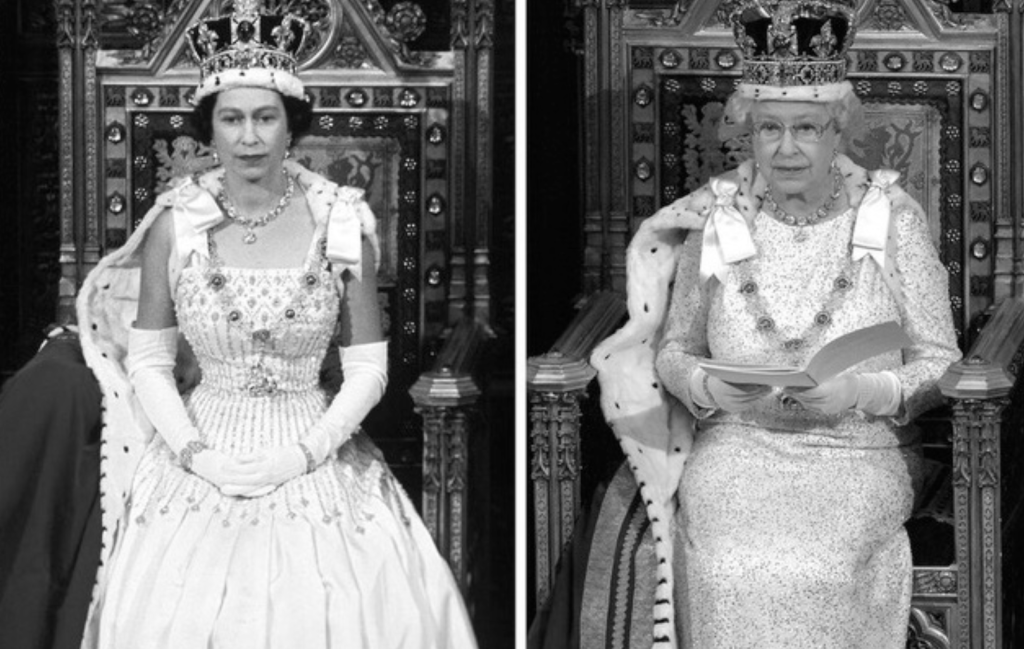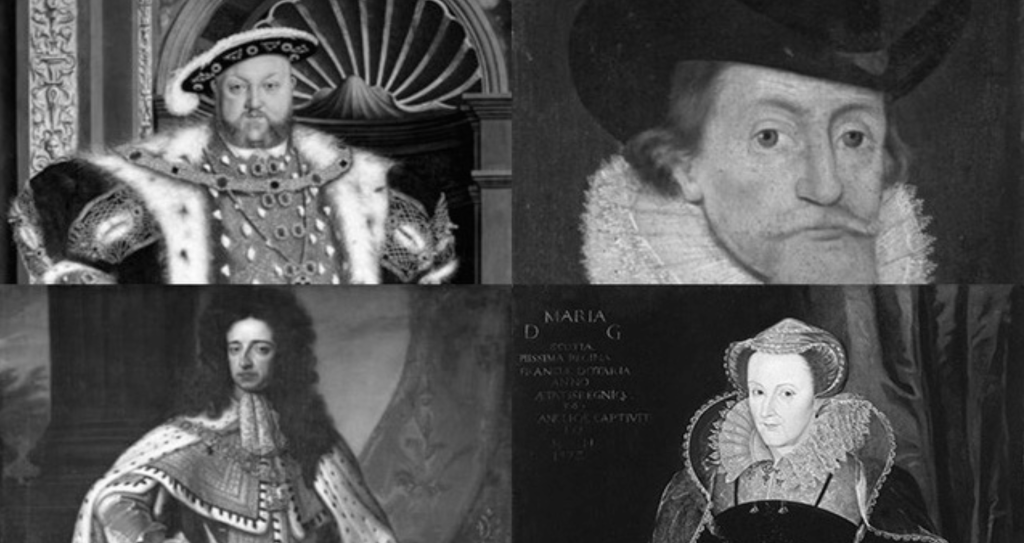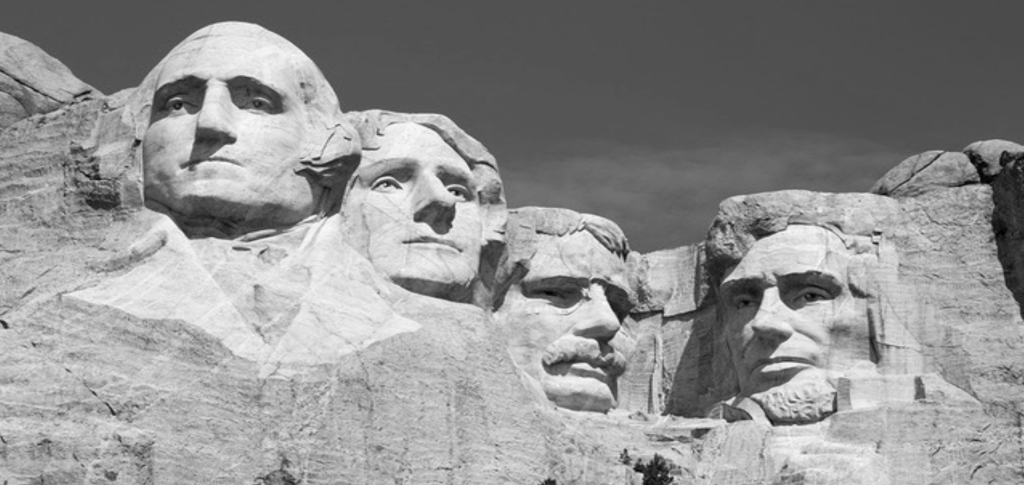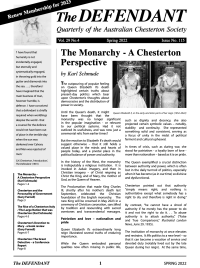
The outpouring of popular feeling on Queen Elizabeth II’s death highlighted certain truths about present-day politics which bear upon Chesterton’s thoughts about democracies and the distribution of power in society.
Until the Queen’s death, it might have been thought that the monarchy was no longer significant in the popular imagination – or relevant to our political systems. Had it not outlived its usefulness, and was now just a ceremonial relic from earlier times?
But the reaction to Elizabeth II’s death would suggest otherwise – that it still holds a valued place in the minds and hearts of people today, and a pivotal place in the political balance of power and authority.
In the history of the West, the monarchy is indisputably a religious institution. It is invoked in Judaic imagery, and then in Christian imagery – of Christ reigning as Christ the King, and of Mary, the mother of God, as the Queen of Heaven.
The Proclamation that made King Charles III, shortly after his mother’s death last September, celebrated the Christian foundation of the English monarchy. The new King will be crowned in May 2023 in a ceremony of Christian coronation, sanctified by tradition and resounding with sacred overtones and transcendental messages.
Patriotism and love – nationalism and pride
Queen Elizabeth II’s extraordinarily long reign illustrated several truths of enduring importance.
While the Queen embodied personal qualities now often missing in public life, such as dignity and decency, she also projected certain symbolic values – notably, stability and continuity. She represented something solid and consistent, serving as a focus of unity in the midst of political ferment and cultural upheaval.
In times of crisis, such as during war, she stood for patriotism – a loyalty born of love – more than nationalism – based as it is on pride.
The Queen exemplified a crucial distinction between authority and power, which is often lost in the daily turmoil of politics, especially when it has become (as in our time) so divisive and dysfunctional.
Chesterton pointed out that authority “simply means right; and nothing is authoritative except what somebody has a right to do, and therefore is right in doing.”
By contrast, “he cannot have a shred of authority if he merely has the power to do it and not the right to do it. . . To abuse authority is to attack authority.” (“False and True Comparisons,” Illustrated London News, June 29, 1935).
The institution of monarchy at once elevates and restrains. It lifts politics to a new level – so that it can become a vocation of service and devoted duty (notably lived out by the late Queen during her reign). At the same time, it limits politics by setting it in a universe of higher beliefs and ideals.
The popular appeal of the monarchy draws on both these strengths. Ordinary people prize an institution like the monarchy that seeks to embody and advance the common good, while resenting the profligate use of power for self-promotion rather than social and political service.

They sense that the monarchy is about more than politics – that it stands for higher convictions and values. It prevents a society from making politics the supreme pursuit and preoccupation – a role it can never fully carry out, projecting promises it can never fulfil.
The monarchy can serve as a counter – and a corrective – to the obsessive dependence on politics to provide all of the solutions to human needs; solutions that so often prove elusive, if not illusionary, and also temporary.
As Western culture has become more secularised – distancing, if not expelling, the public expression and influence of religious faith – it cannot but look upon this world as the be-all-and- end-all.
It is uneasy with an institution like the monarchy, which presents a decidedly threatening alternative to unmitigated government power.
This challenge is posed, on the one hand, by the monarchy’s cultural authority, which has garnered the weight and testimony of history and is expressed in public ceremonies, and on the other, by its religious authority, which appeals to the human yearning for an authority that is above earthly experience, and extends the promise of redemption beyond the grave.
Only such a foundation can prevent an earthly cause – in support of even the most worthy ideals like liberty and equality – from being perverted into a powerful ideology, and functioning as a substitute religion.
In practice, an ideology will always promote a falsehood – that a perfect and sustainable happiness is achievable in this world. It fosters utopian hopes, or else – as an obverse in our time – an apocalyptic fear and panic at uncontrollable forces.
Modern politics is full of ideologies – notably in the areas of sexual liberation and climate control – that serve as substitute faiths. They project the promise of salvation, but do not correspond to any truly transcendental realities that can sustain and justify such hopes.
In Chesterton’s prophetic words:
“The world cannot keep its own ideals. The secular order cannot make secure any one of its own noble and natural conceptions of secular perfection.”
Monarchy in a disguised form
Chesterton, as well as Hilaire Belloc, expressed in books their profound understanding of secular and transcendental truths following lecture tours of the United States – Chesterton’s What I Saw in America (1922) and Belloc’s The Contrast (1923).

The American experience emphasised to them how much the secular ideals of freedom and equality could be kept, but only if they were subsumed into a higher order.
Both authors believed that the political character of America was essentially monarchical – not in the sense of a person sitting on a throne, but as a system that vested executive responsibility in a single person.
The institution of monarchy had not been abandoned in America so much as adopted in a disguised form. For all its manifestations of modernity, the American Republic was, in fact, an historical monarchy.
It was, in Chesterton’s judgment, “the last medieval monarchy, . . . [in which] the President shall rule, and take all the risks of ruling. . . . The idea is that the President shall take responsibility and risk; and responsibility means being blamed, and risk means the risk of being blamed.”
Thus the office was not that of an “absolute king”. It gave the power of national decision-making and military command to a single person, but it was subject to the constitutional authority of checks and balances – the constraints of a legislature(as a States-based Congress changeable by regular elections) and a judiciary (with the Supreme Court at the apex).
The practical power of government was finally responsible to the people. Belloc thought that, in America, “the fusion of the individual with the people” was “the sacramental stamp of monarchy.”
Yet the office of the President was not merely functional. It assumed symbolic weight, as an incarnation of the unity of the Republic and the loyalty of its citizens.
In time, this symbolism, particularly in a media-saturated age, acquired the pervasive trappings of popular celebration.
The 1940s saw the sculptures at Mount Rushmore in North Dakota as a personal portrayal of several American Presidents. And from the 1960s, certain dynastic families emerged – such as the Kennedys, Bushes and Clintons – so that a modern democracy came to resemble the hereditary succession of a family-based monarchy.
Monarchy as counter-cultural
Amid the paralysis of contemporary politics, the death of Queen Elizabeth II may prompt a fresh look at the monarchy as a counter-cultural institution.
It could offer lessons on different ways of distributing and authorising the use of power in society.
